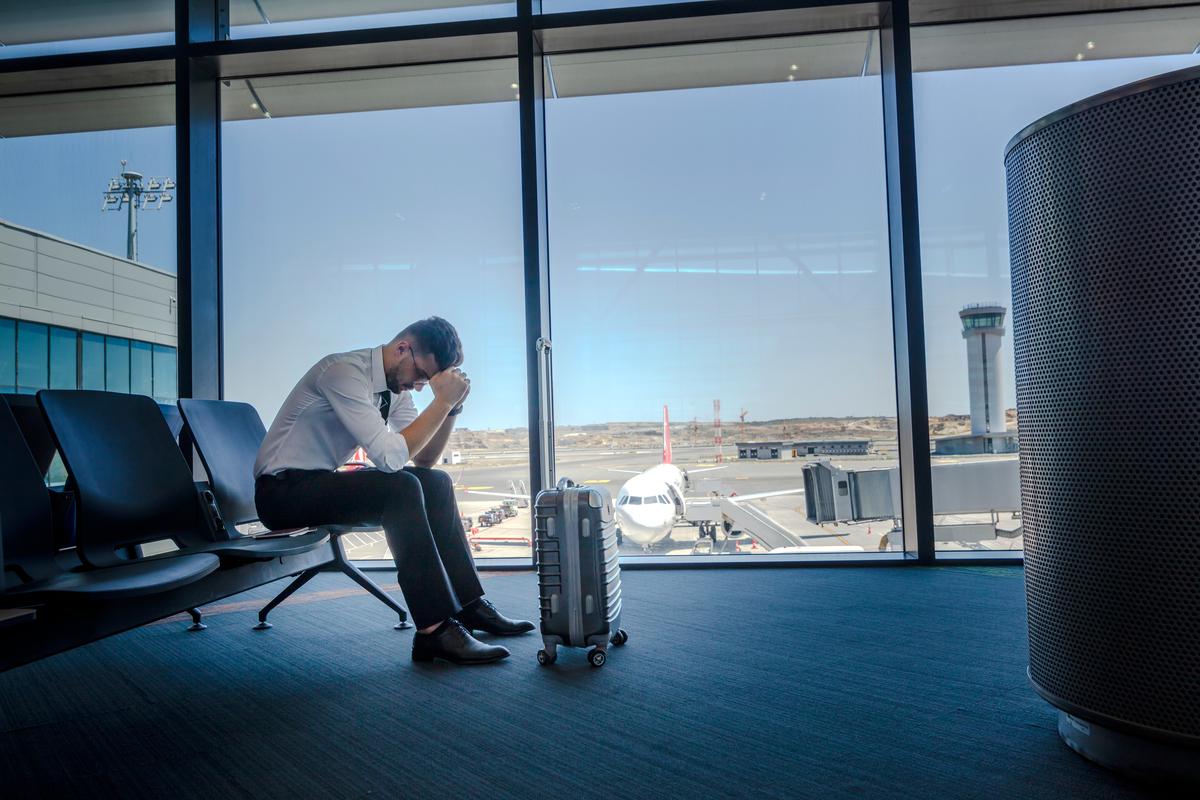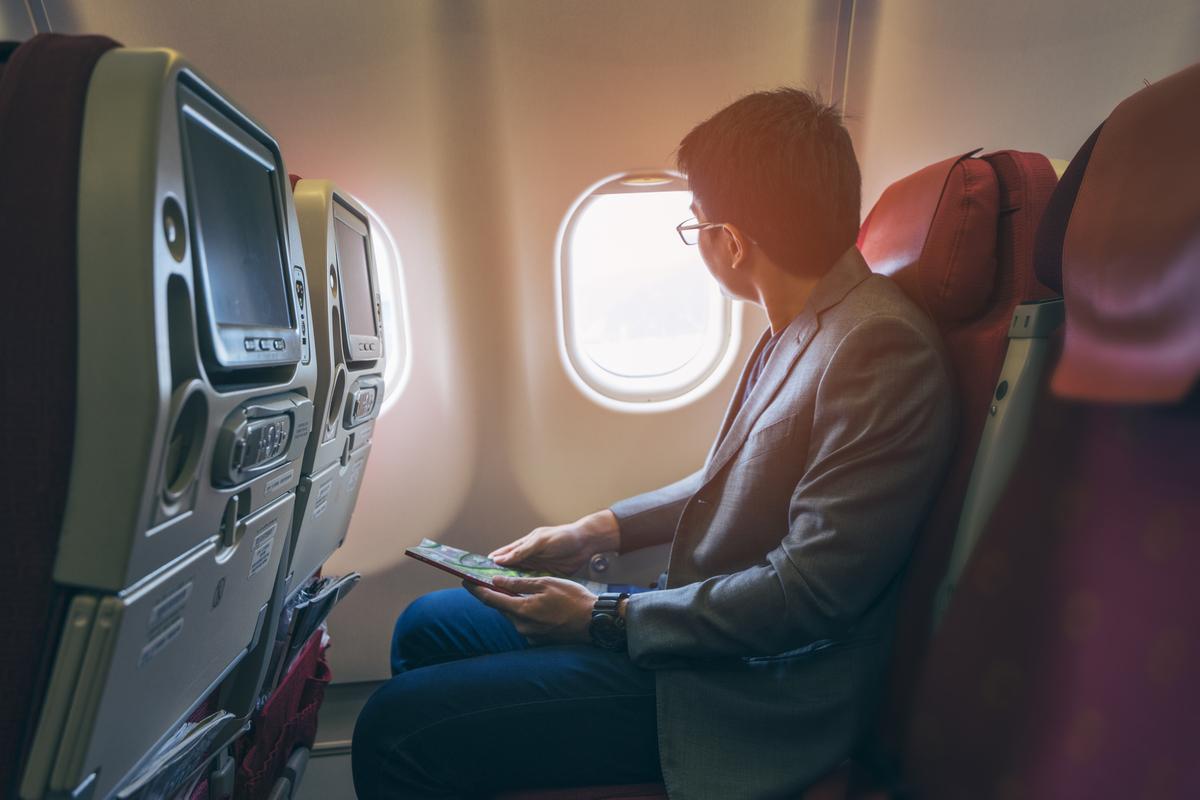How to support corporate travellers with a fear of flying

Despite air travel’s positive safety record, a fear of flying is more common than you may think. For example, up to 6.5% of Americans and 1 in 10 of the British population have a fear of flying, while up to 40% of all people experience some flight anxiety.
And with many organisations ending their business travel pause, it is now more important than ever for corporate travel programmes to safeguard traveller mental health and know how to support anxious travellers in circumstances where they cannot avoid flying.
In this insights piece we discover:
- What fear of flying is
- What causes aerophobia
- Tips to share with anxious travellers
- How to help business travellers scared of flying
Fear of flying: explaining the anxiety
The first thing to understand about anxiety as a health condition (in general) is that it presents itself in different ways in different people. What may cause moderate stress for one person could literally feel like life-or-death to another, even if that situation is not literally a life-or-death scenario. It just feels like one.
Flight anxiety is no exception to the rule. For some, air travel can trigger mild symptoms of anxiety just before they board the plane or reach the airport. For others, it’s a clinical phobia (aerophobia or aviophobia, to be exact) where even the thought of flying triggers severe panic attacks long before the scheduled flight date.

What causes aerophobia?
It usually doesn’t have a specific cause. In fact, it’s very rare for aerophobia to stem from a traumatic experience on a flight. Which makes sense considering that although 40% of people have a fear of flying, only 1.93 aircraft accidents occur for every 1 million departures – that’s less than 1%. To put it into perspective, you’re more likely to have been born a quadruplet than to get into a plane crash.
So while flight anxiety doesn’t have a direct cause, it may be triggered by:
- Movies and news stories about terrorism, crashes, or violence on airplanes
- Takeoff and landing
- Thoughts about fire or illness spreading through the plane
- Turbulence
Aerophobia/Aviophobia can also be a symptom of another phobia, such as:
- Acrophobia (fear of heights)
- Anthropophobia (fear of people)
- Claustrophobia (fear of confined spaces)
- Mysophobia / Germaphobia (fear of germs)
Tips to share with anxious travellers
Supporting travellers with flight anxiety
Maintaining traveller wellbeing means being flexible and making accommodations in your travel policy. Here are four ways you can build travel wellness into your programme and stay empathetic towards your anxious flyers.
Invest in non-stop flights and business class
Don't trigger your traveller’s symptoms by sticking them in a loop of layovers and reboarding experiences. For people with flight anxiety, it’s best to keep air travel to a “one-and-done” policy. This way, your travellers only must focus on getting through one (or two, if a round trip) flight.
The wider seats and extra leg room in business class can also help offset potential triggers for claustrophobia, anthropophobia, and even germaphobia, and at the very least, give your anxious travellers some more breathing room.
Keep your travellers in the loop
The more your travellers know, the more in control (and less anxious) they feel over their situation. Good preparation and communication can help alleviate some fears around flying. Provide travellers with emergency contact numbers and have a contingency plan should last-minute travel changes throw a wrench in their plans.
Using a mobile app with push notifications and text updates can also make travellers feel more secure and looked out for. You may also consider recommending available courses and resources to help with flying phobias, such as flight simulators, to prepare them for the real deal.
Implement bleisure into your corporate travel
By now, you’ve probably heard of the concept of “bleisure” travel, but did you know it can be a great way to increase the well-being of your travellers with flight anxiety? By offering travellers downtime in the days before and after their big flight, you’re giving them a chance to cool down and recuperate after a triggering experience.
This ensures that they have the mental and emotional capacity to be the best versions of themselves for their presentation, trade show, or whatever business has brought them there. Not to mention, these off-days can also be a great motivator to help your traveller get through their flight!
Use wellness reporting to measure travellers' mental health
Above all, ask your travellers how they feel and how well your travel policy meets their personal needs, not just the organisation’s. Be sure to check in with your travellers before and after their trip to gain insight on their experiences and see where you can improve to best support your travellers.
You might even consider leveraging a reporting tool to track and monitor the well-being of your travellers and easily identify gaps in your program, such as tracking how often someone is flying, the amount of red-eye flights travellers are taking, and more.